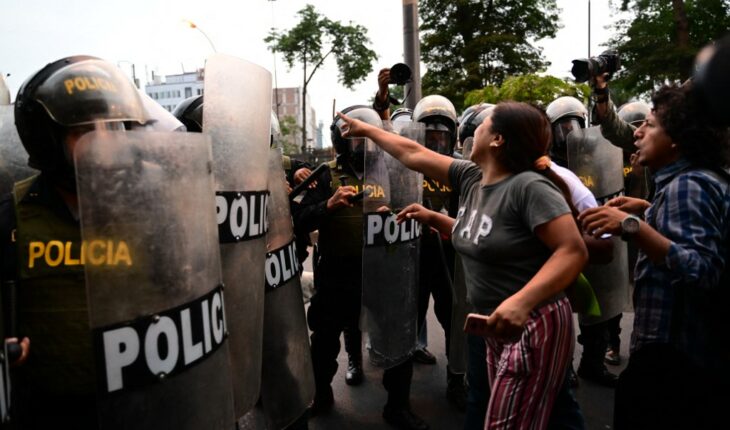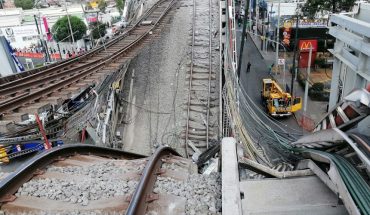Peru’s early elections to end the crisis following the ouster of President Pedro Castillo have failed, amid violent protests that have left thousands of tourists stranded in Cusco and Machu Picchu.
The demonstrations have left more than 500 injured and 18 dead, several after clashes with the military in the framework of the state of national emergency.
Protesters are calling for Castillo’s freedom, the resignation of his constitutional successor, former Vice President Dina Boluarte, the closure of parliament and immediate general elections.
On Friday, Parliament rejected a proposal by Boluarte to bring forward the elections from 2026 to 2023.
The initiative would have allowed the call to the polls in December 2023 and the handover of the command of Boluarte in April 2024. This decision jeopardizes his permanence in power.
“What is going to come is the resignation of Dina Boluarte, and give way to a democratic transition,” predicted leftist parliamentarian Ruth Luque.
“Because of the number of Peruvians killed, Mrs. Boluarte should resign,” said centrist lawmaker Susel Paredes.
Faced with a resignation of Boluarte, the law provides that the successor is the president of Congress, José Williams. If he withdraws, the position falls to the president of the Supreme Court, Elvia Barrios, who must call elections.
On Friday night, after a meeting of the representatives of the three branches of government at the Government Palace, Williams recalled that a request to vote again in Parliament to advance elections is still pending.
Boluarte held “a telephone conversation with the Secretary of State of the United States, Antony Blinken, who reiterated his support for Peru “and his willingness to continue strengthening the rich bilateral relationship,” according to a statement from the Foreign Ministry.
For his part, the president of Colombia, the leftist Gustavo Petro, considered the arrest of Castillo, to whom he has already given his support, an “outburst” of justice.
Read: Pedro Castillo: 3 keys behind the political chaos in Peru that led to the impeachment and arrest of the president
Airport reopens in Cusco
The closure of roads and airports interrupted the transfer of tourists in the Andean city of Cusco, the tourist capital of the country.
“There are 5,000 tourists stranded in the city of Cusco, they are in their hotels waiting for flights to be reactivated,” Darwin Baca, mayor of the neighboring district of Machu Picchu, told AFP.
An army helicopter will arrive on Saturday in the district of Machu Picchu to transfer in four flights more than 500 foreign tourists who are stranded, the municipality said.
Cusco’s international airport has been closed since Monday following an attempted takeover by protesters. However, this Friday, the Ministry of Defense announced its reopening.
Meanwhile, from the Inca citadel of Machu Picchu, about 200 tourists, mainly North Americans and Europeans, walked along the railway to the town of Ollantaytambo, about 30 km away, to make a connection to Cusco.
The tourist train travels along this route, whose service is suspended.
Shot dead
The demonstrations erupted after Castillo, a rural teacher of the left and humble origin, tried to carry out a self-coup d’état on December 7, close Parliament, intervene in public powers and govern by decree.
He was arrested in “flagrante delicto” when he tried to reach the Mexican embassy to take refuge. The court decided on Thursday that he will remain imprisoned for 18 months, until June 2024, to be investigated for rebellion.
Against Castillo there is also an unprecedented constitutional complaint by the prosecutor’s office for corruption.
The protests have been most intense in the southern Andes of Peru, a region hit by poverty and with social demands postponed.
On Thursday, an attempt to seize the Ayacucho airport (south) was contained by the army and left eight dead, Ombudsman Eliana Revollar told AFP.
“There was an attempt to take over the airport, which was under the control of the army. When they were surrounded and that the mass was approaching, what they indicate (the reports) is that they would have given the order to ‘stop’ (before shooting), then shots in the air but then they have been shots to the body, “he explained.
He said protesters carried slingshots and stones. “These people have died from gunshot wounds,” he said.
The death toll since the protests began on Dec. 7 stands at 18, Health Minister Rosa Gutierrez said Friday. Among them are at least two minors.
The UN Committee on the Rights of the Child urged Peru to investigate the deaths of children.
In addition, there are six other deaths from events linked to the road blocks, such as accidents or deaths of patients – even minors – who could not reach a hospital in time.
See also: Peru declares state of national emergency and proposes elections for 2023
“This has to stop”
According to the Ombudsman’s Office, there are also 518 wounded, including 250 civilians and 268 police officers. Human rights organizations reported 147 detainees.
“For us the concern is that the army always has to be behind the police (during the control of demonstrations)” because the military “is ready to shoot,” Revollar said.
Boluarte condemned “the acts of vandalism of some radicals using the goodwill of the people.” “This has to stop,” he said Friday during a military ceremony.
In protest at the deaths of protesters, Education Minister Patricia Correa and Culture Minister Jair Perez tendered their resignations on Friday.
What we do at Animal Político requires professional journalists, teamwork, dialogue with readers and something very important: independence. You can help us keep going. Be part of the team.
Subscribe to Animal Político, receive benefits and support free journalism#YoSoyAnimal





